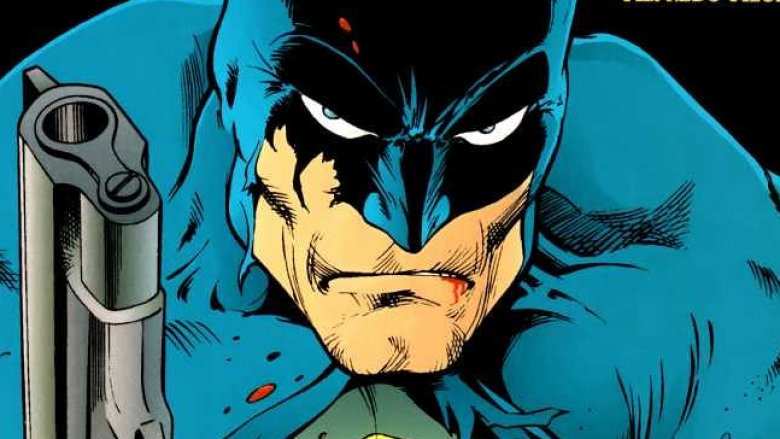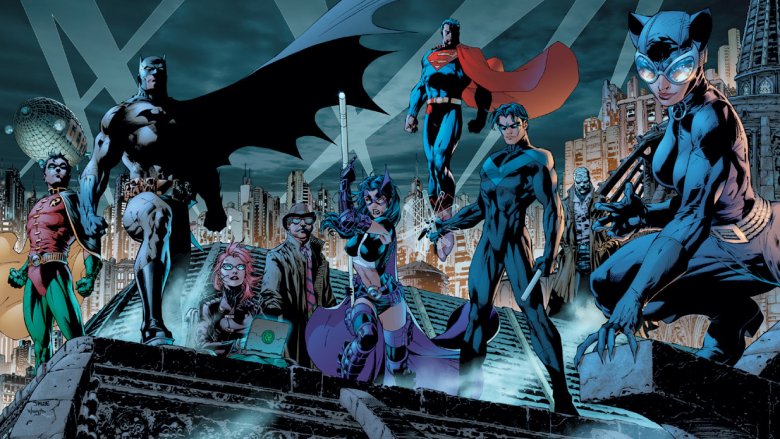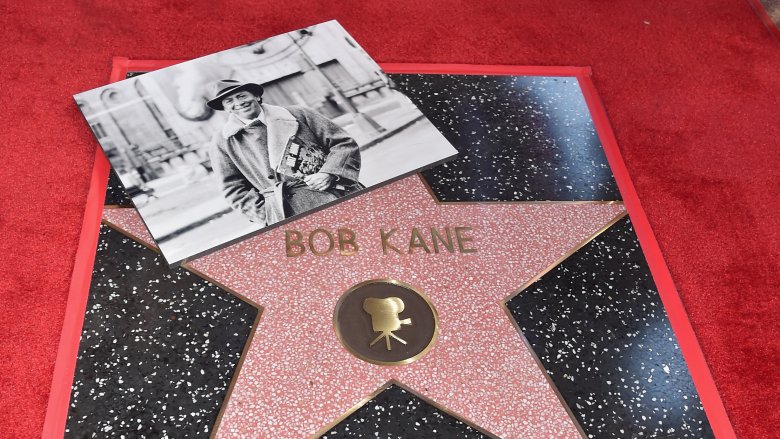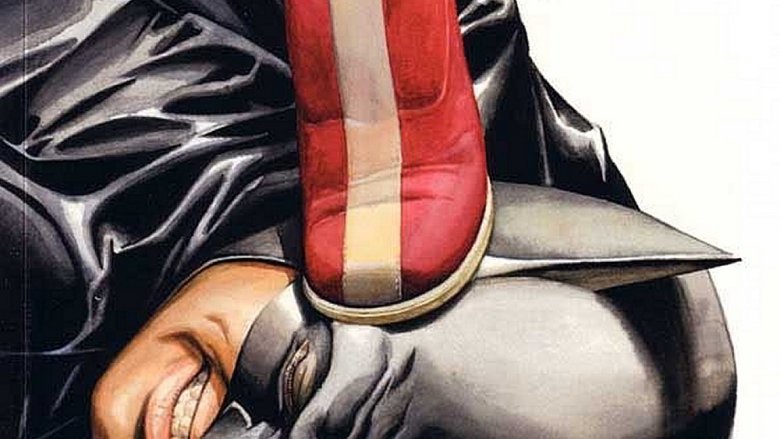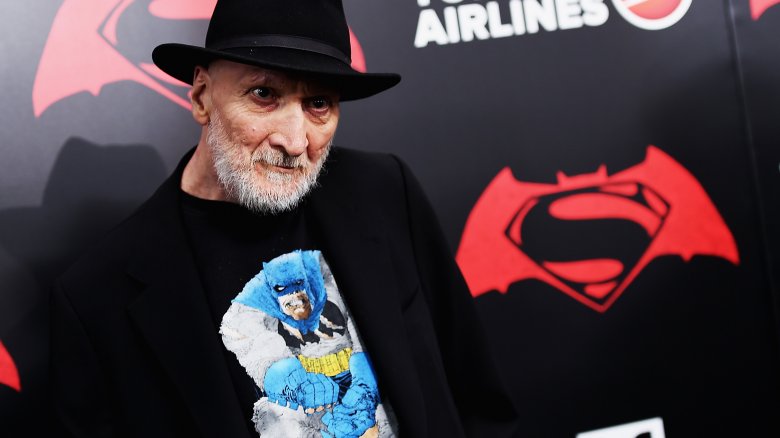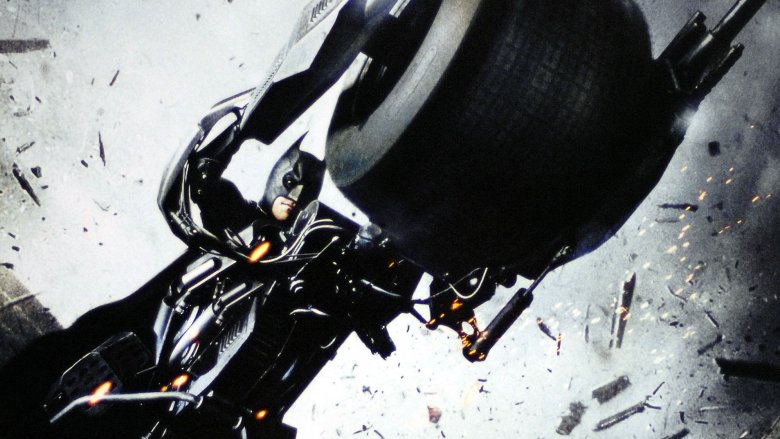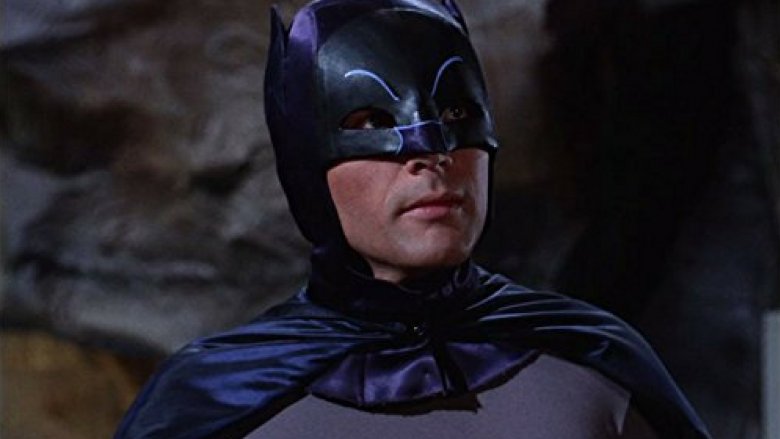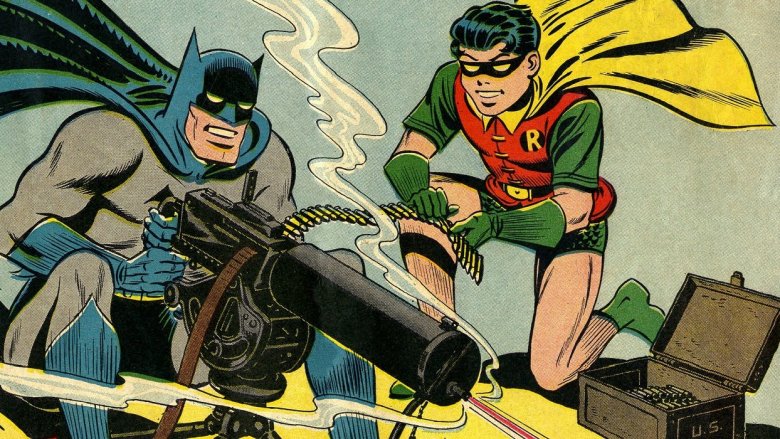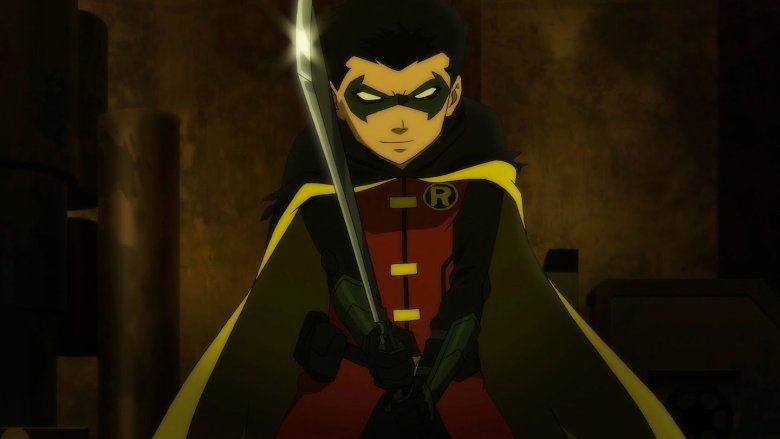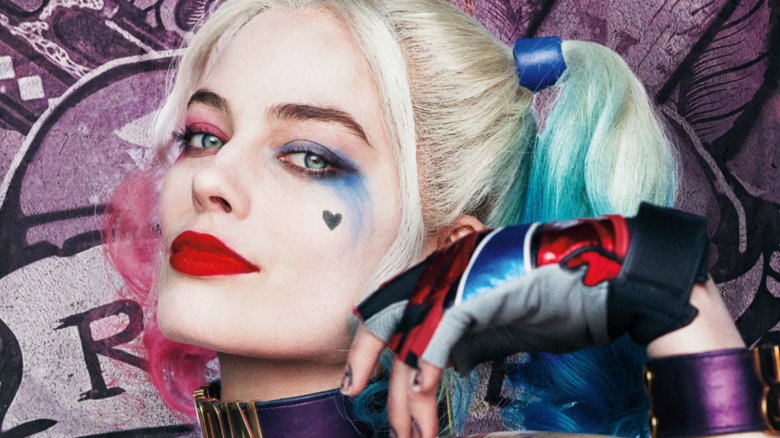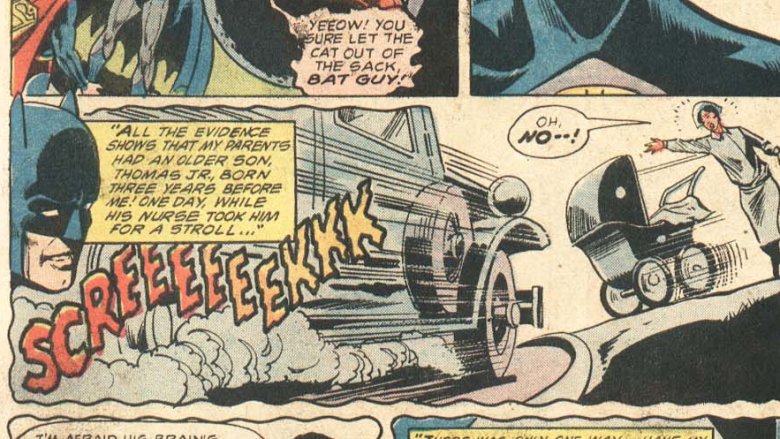False Facts About Batman You Always Thought Were True
Bruce Wayne isn't the kind of guy you'd expect to be so popular. Sure, he's a well-traveled billionaire playboy, but instead of throwing lavish parties, Bruce tends to spend his free nights brooding in his dark, moldy basement, when he's not out busting people's noses.
Even if you wouldn't want to be Bruce's BFF, though, his masked alter ego is easily one of the most beloved fictional characters of all time. Batman's classic emblem adorns every little boy's favorite T-shirt, his comic book has been running since World War II, and his movies have scored over $2 billion at the box office. One big downside to all this popularity, of course, is that a lot of misinformation has spread out of Gotham City, and no matter how hard Commissioner Gordon tries to clamp down on the leaks, people keep telephoning some inaccurate "facts" about everybody's favorite caped crusader. Here are things you might be getting wrong about Batman.
Batman is a loner
Sure, Batman can be a serious jerk. He's paranoid, moody, and his legendary social faux pas tend to alienate anyone who tries to be his friend. However, the popular notion that Batman is some sort of lone wolf contradicts the fact that anytime he needs a hand, the entire freakin' Batman Family has got his back. There are untold different versions of Robin, a few Batgirls, Catwoman, Oracle, Batwoman, Batwing, Nightwing, Azrael, the Huntress, and even Ace the Bathound ... you get the idea. The Bat-Family is bigger than the Justice League, yet another team this so-called "loner" is on.
However, even when you strip Batman back to the basics, the guy still isn't much of a loner. For example, as Christopher Nolan's fantastic Dark Knight movies show, even a Batman without Robin still depends on allies. While Alfred mans the Batcave, Jim Gordon is his ally on the police force, Harvey Dent is/was his legal aide, and his buddy Lucius Fox takes care of Wayne Enterprises. None of this makes Batman a worse character. Actually, it just makes him more realistic since it shows that while Bruce might be the driving force, building a legend like "the Batman" could never be a one-man operation.
Bob Kane invented Batman
Every time you've ever experienced a Batman movie, cartoon, comic book, or video game, you've read a sentence that is one of the biggest lies in four-colored history: "Batman created by Bob Kane." The truth is a lot more complicated. As Gizmodo explains, what actually happened in the late 1930s was that an artist named Bob Kane had the idea of making a superhero named "the Bat-Man," and drew a sketch of a red-shirted blond dude with giant bat-wings and a little domino mask. Kane showed his drawing to fellow creator Bill Finger, who took Kane's outline and added almost everything we associate with Batman today, including the cool costume, the tragic origin, the lack of superpowers, the Batmobile, the Joker, and Catwoman. Finger wrote the stories, and Kane drew them. So while Kane certainly deserves credit for getting the ball rolling, it's a horrendous injustice that Bill Finger has been left out of the history books.
How'd Finger get so screwed? Legal tape. All the way back when "the Bat-Man" was a spring chicken, Kane managed to push the publisher into signing a contract which named him as the sole creator, in perpetuity. It wasn't until the Dark Knight's 75th anniversary that Finger finally was credited on a Batman cover, and 2015's Batman v Superman: Dawn of Justice marked his first big screen credit, according to CBR.
Batman can do anything with 'prep time'
What makes Batman one of the most engaging characters in comics is his mortality. He's a regular man, covered in scars, whose life could end with one bullet. Unfortunately, if your only experience of Batman comes from internet message boards, you might get the false impression that he's some overpowered figure with superhuman "prep time" skills, who could take down anyone from the Anti-Monitor to Thanos. Aside from how ridiculous the "prep time" concept is — as WhatCulture points out, many other superheroes are better at that — if Batman was really so overpowered, he'd be the world's most boring superhero.
The whole Bat-God stereotype probably comes from people who haven't read the comics or people who are seriously misinterpreting both the Justice League's "Tower of Babel" story and, most importantly, Frank Miller's The Dark Knight Returns. In the latter story, Batman's so-called "victory" over Superman is often overblown, considering Batman's entire strategy relied on the fact that his opponent is allergic to green space rocks. And even then, while Batman's bragging about his "win," he suffers a crippling heart attack. Since then, some fans have loudly opined about how powerful Batman is, even though the comics have shown him getting beaten up by pretty much every other DC superhero. None of this makes Batman weak, though. Actually, it's exactly what makes him cool. He's an average dude who fights neurotic thugs in bright costumes, not aliens or giant robots. The whole "prep time" thing is just silly internet baloney.
Frank Miller made Batman 'dark'
Frank Miller is one of the most important creators in Batman's history. Every modern Batman movie has been highly influenced by the moody aesthetic that Miller introduced in both The Dark Knight Returns and Batman: Year One, the latter of which inspired some of the best scenes in Batman Begins. Considering the high profile of Miller's work, it's no wonder that so many magazines and TV shows have often credited Miller with recreating Batman as a dark and gritty character, breaking down the neon glow of the campy 1960s series.
But nah, sorry, Miller wasn't the one who made Batman dark again. That credit goes to the one true dynamic duo, writer Denny O'Neil and artist Neal Adams.
Back in 1969, as Forbes explains, an edgy newcomer known as "Marvel Comics" was trouncing cheesy ol' DC, so O'Neil and Adams made the conscious decision to bring Batman back to his pulpy, gothic roots. The stories sharpened, the shadows darkened, and the scale became epic with the introduction of the mysterious eco-terrorist Ra's al Ghul. The tortured, moody, but still heroic Bruce Wayne seen in the Nolan films, the Arkham games, and Batman: The Animated Series stems from O'Neil's portrayal, rather than the murderous sociopath Frank Miller wrote in The Dark Knight Returns.
Batman could totally exist in real life!
...sort of? Not really. Batman's a lot more realistic than Green Lantern, but when Scientific American interviewed E. Paul Zehr, an associate professor of kinesiology and neuroscience, the doctor poked some holes in the Batman legend. Zehr explained that if Bruce Wayne spent a minimum of 10 to 15 years training up on that snowy mountain with the League Of Shadows, he'd eventually build up the denser bones and faster reaction speeds necessary to make his vigilante work possible. However, every night on the rooftops would damage him, and he'd need to spend the whole next day recovering. That doesn't line up with Wayne's unhealthy sleep patterns, as shown in the comics and movies, where he often attempts the impossible feat of staying up all night and then going to Wayne Enterprises the next morning.
The biggest problem, though, is that Batman would never be able to lose a fight — since, well, he'd probably die. Looking at the winning streaks of professional athletes, Zehr estimates that Wayne could keep going for two to three years, after which he'd have to throw in the towel. The Dark Knight trilogy actually got this right, since Nolan's Batman was only active for a few years before he retired, and he was still pretty banged up eight years later.
The 1960s Adam West series was terrible, right?
Holy puns, Batman! A cheesy theme song! Ridiculous traps! Fullscreen "BAM!" and "POW!" captions! Could anything have ruined the Dark Knight more than having such a brightly colored spectacle in his name?
Trendy as it is today to trash the old 1960s series today, Wall Street Journal points out that Adam West actually saved Batman from obscurity. Back when the TV series first came out, Batman's comic book sales were in the dump, according to io9, and the show not only brought new kids into the Batman fold, but reminded adults of the characters they'd enjoyed when they were younger. The show also made a minor bad guy named the Riddler into a big-name villain, according to Den of Geek, largely thanks to actor Frank Gorshin. Furthermore, today's cultural landscape might've been totally different if the 1960s Batman show hadn't been such a hit. The series made superheroes more mainstream in a big way, leading audiences on a direct path to Christopher Reeve's Superman in the 1970s, Tim Burton's Batman in 1989, and Sam Raimi's Spider-Man in 2002. So basically, if you love either The Dark Knight or the Marvel Cinematic Universe, you can thank Adam West for doing the Batusi.
Batman has never killed anyone
Okay, to be clear: Batman's dedication to never taking a life, as well as his abhorrence for guns, have become a huge part of the character's pathos, to the extent that whenever modern depictions show him killing people (*cough* Batman v Superman) it just feels uncomfortable. Nonetheless, the Batman of the 1930s and 1940s had more in common with Marvel's Punisher than today's caped crusader. Business Insider makes a strong case against Batman's purity, pointing out that in the character's first appearance, he actually punched a guy into a vat of acid. Not bad enough? He also snapped necks, pushed people off buildings, and even hanged someone from his little plane. C'mon, Bruce!
Even the contemporary, "no killing allowed" version of Batman has gone through some bad days, though. Back in the late 1980s, there was a story where Batman tried to stop a Soviet assassin named the KGBeast from assassinating President Ronald Reagan — definitely the 1980s — and there's a pivotal moment where Batman finds out that even if he captures KGBeast, the villain will simply be left free. This puts Batman in a bind ... so he locks the bad guy up in the sewers, presumably so he can starve to death. Yikes! This was retconned about a year later (he supposedly felt bad and called the cops, though KGBeast had already escaped), but it's obvious what the writer's original intention was.
Batman doesn't have any biological kids, just Robins
Considering how many compartments Batman has in his utility belt, one would hope Batman carries a form of "protection" that isn't batarangs. But insane stuff happens sometimes, and on one particular evening that Batman shared with his great love, Talia al Ghul, a little something slipped through the cracks. Nine months later, a little baby named Damian Wayne popped out — the son of Batman and Talia, and grandson of Ra's al Ghul.
Now, Batman's had a lot of adopted sons, all of whom go by the name "Robin." But Damian was a whole other ballgame, considering Bruce only met Damian when he was a bit older, after the kid had been raised by the League of Assassins. After negotiating the whole "don't kill people" bit for a while, though, Damian took on the mantle of Robin and has become a fixture of Batman comics today. There have been several other Batkids in various timelines and incarnations, too, including the original Huntress, who was written to be his daughter before the lineage got retconned.
Everything cool about Batman came from the comics first
Every time a new Batman movie comes out, you'll always hear that one guy in the back row grunting, "That wasn't how it happened in the comics." (A true comic geek might respond with, "Which comics? And how many times have they been rebooted?") But what's arguably more important to recognize is that a lot of Batman's most iconic tropes, gadgets, and associated characters were created in film, TV, and radio before they ever appeared in the four-colored panels. For example, the famous Batcave — or "the Bat's Cave," as it was originally called — actually debuted in that weird (and uncomfortably racist) 1943 theatrical serial. The serial depicts Wayne's lair as basically just a creepy cave with a desk and file cabinet, but Bob Kane thought it was cool, so he and Bill Finger developed a more advanced version for the comics.
Another example is the now iconic character of Harley Quinn, who was invented for Batman: The Animated Series. That cartoon is also famous for turning a lame nobody named Mr. Freeze into a character with so much pathos and depth that he's now one of Batman's most popular bad guys.
He has no siblings
In most versions of the Batman origin story, Bruce Wayne is portrayed as an only child. To be fair, the whole mythology probably works best that way, since having siblings might take away from Bruce's loneliness. However, there is an oft-forgotten old Pre-Crisis story that depicted Bruce having an older brother named Thomas Wayne Jr., according to the DC Database, who was allegedly dealt a traumatic brain injury in a car crash and institutionalized. Apparently, Martha and Thomas Sr. didn't want to burden little Bruce with this heartbreaking knowledge, so he never met his big bro until years after becoming the Batman.
Now, this story has been retconned out of existence a billion times over, but some recent comics have occasionally played with the idea of reintroducing Thomas Wayne Jr., according to SyFy Wire. However, the details of Thomas Jr.'s existence are intentionally shaky. We'll just have to wait until the next installment of Thomas Jr. gets introduced (and inevitably retconned). Aren't comics grand?
